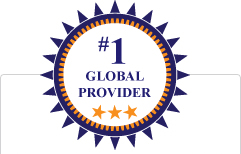...
How would you like to be a Guest Blogger for KMI? Email us at: info@kminstitute.org and let us know your topic(s)!
The Why and How of Innovating your Knowledge Management Program
 Introducing innovation into your knowledge management framework entails integrating novel ideas, cutting-edge technologies, and advanced approaches to elevate the manner in which your organization captures, organizes, shares, and leverages knowledge. This process enhances efficiency and fosters a culture of continuous improvement and adaptability. By embracing innovation, your organization can stay ahead of the curve, effectively harnessing the power of knowledge to drive success and achieve strategic objectives.
Introducing innovation into your knowledge management framework entails integrating novel ideas, cutting-edge technologies, and advanced approaches to elevate the manner in which your organization captures, organizes, shares, and leverages knowledge. This process enhances efficiency and fosters a culture of continuous improvement and adaptability. By embracing innovation, your organization can stay ahead of the curve, effectively harnessing the power of knowledge to drive success and achieve strategic objectives.
Let’s see such low-hanging and long-term innovative practices that can help you build a robust Knowledge management practice and drive adoption of your KM framework.
Creative Workshops, Coffee Connects, and Webinars: Elevate the knowledge exchange experience by hosting in-person and virtual workshops, engaging webinars, and interactive formal and informal connects. These dynamic events catalyze engagement, stimulating vibrant discussions and fostering seamless collaboration among employees, and enabling the flow of tacit knowledge that is otherwise difficult to capture.
Internal Social Media Platform: This one is always a hit as people can quickly relate to the platform and its purpose as an informal forum for employees to post insights, articles, updates, and questions, fostering a sense of community and encouraging ongoing learning.
Knowledge on the go: Develop a mobile app that enables employees to access and contribute to knowledge anywhere, and anytime. Mobile accessibility can increase adoption, especially for remote and field-based workers.
Gamification and R&R Elements: Introduce gamification elements like badges, leaderboards, brainstorming sessions, storytelling forums, harvesting campaigns, and rewards to encourage users to actively participate in knowledge sharing and consumption. This can create a sense of competition and achievement, boosting adoption rates.
Information Nuggets: Break down knowledge into bite-sized, easily digestible modules. Microlearning promotes continuous learning by fitting into busy schedules and catering to short attention spans.
Collaborative Filtering: Employ collaborative filtering techniques to recommend knowledge resources based on what similar users have found valuable. This approach leverages collective intelligence for improved knowledge discovery.
When it comes to driving long-term KM acceptance and adoption in your organization, the key is to ensure that the knowledge is relevant, easily accessible, current and makes the lives of your employees more straightforward and faster.
AI-Powered Recommendation Systems: Implement AI algorithms to analyze user behaviors and preferences, and then provide personalized knowledge recommendations. This can improve user engagement by offering relevant content based on individual needs.
Collaborative Filtering: Employ collaborative filtering techniques to recommend knowledge resources based on what similar users have found valuable. This approach leverages collective intelligence for improved knowledge discovery.
Virtual Reality (VR) and Augmented Reality (AR): Use VR and AR technologies to create immersive training experiences, virtual walkthroughs, and interactive tutorials. This visual and experiential approach can enhance the understanding and retention of complex information.
Personal Knowledge Assistants: Introduce AI-powered personal knowledge assistants that can answer questions, provide recommendations, and guide users through the knowledge management system.
Rich Media Content Creation: Encourage the creation of diverse content formats such as videos, podcasts, and infographics. This variety appeals to different learning styles and preferences.
Integrations with Existing Tools: Seamlessly integrate knowledge management functionalities into the tools and platforms your employees already use, such as email clients, project management software, and collaboration tools.
Feedback Loops and Continuous Improvement: Implement mechanisms for users to provide feedback on knowledge resources, which can then be used to refine and improve content over time.
Remember, the key is to align these innovations with your organization’s culture, business goals, and user needs. Regular assessment of your Framework and specific strategies and adapting and evolving your knowledge management approach based on feedback and changing requirements is the key to making your KM program successful.
 Ekta Sachania has 15 years of experience in learning and talent development disciplines, including knowledge management content management, and learning & collaboration with expertise in content harvesting, practice enablement, metrics analysis, site management, collaboration activities, communications strategy and market trends analysis. Demonstrated success in managing multiple stakeholder expectations across time zones and exhibiting good project management skills, by successfully developing and deploying projects for large audiences. Ability to adapt and work in emerging areas with fast-shifting priorities. Connect with Ekta at LinkedIn...
Ekta Sachania has 15 years of experience in learning and talent development disciplines, including knowledge management content management, and learning & collaboration with expertise in content harvesting, practice enablement, metrics analysis, site management, collaboration activities, communications strategy and market trends analysis. Demonstrated success in managing multiple stakeholder expectations across time zones and exhibiting good project management skills, by successfully developing and deploying projects for large audiences. Ability to adapt and work in emerging areas with fast-shifting priorities. Connect with Ekta at LinkedIn...
Featured Blog: How Knowledge Management Leads to Cost Savings
Archives
- May 2024 (3)
- April 2024 (5)
- March 2024 (4)
- February 2024 (4)
- January 2024 (3)
- December 2023 (2)
- November 2023 (2)
- October 2023 (3)
- September 2023 (3)
- August 2023 (6)












 We...
We...
